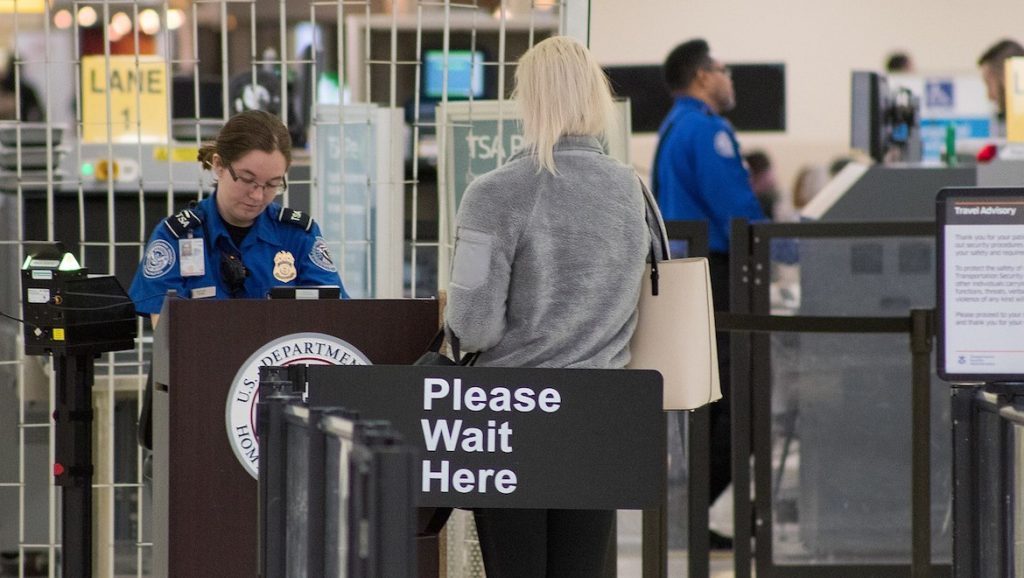
In this cross-posting with The Conversation, health professors Kelley Lee and Anne-Marie Nicol from Simon Fraser University discuss how limiting non-essential travel could help reduce the spread of COVID in Canada.
Prime Minister Justin Trudeau recently announced new travel restrictions and COVID-19 testing and quarantine rules in an effort to limit the spread of coronavirus
Arguments against the adoption of stronger travel-related measures in Canada during the COVID-19 pandemic often point to data suggesting relatively few cases are linked to travellers. The main source of these data is the Public Health Agency of Canada (PHAC), which regularly reports on sites of potential exposure to the virus in Canada, including domestic and international flights.
Based on these reported exposures, PHAC estimates that international travel has accounted for between 0.4 per cent in May to 2.7 per cent in July 2020 of total confirmed cases over the past eight months. These estimates are then regularly quoted in the media by industry representatives, public health officials and government.
On the basis of this data, which suggests there is a low risk from travel, governments have hesitated to put into place stricter measures regarding who travels and what protocols they must follow.
For example, on 21 January, British Columbia Premier John Horgan defended his decision not to restrict inter-provincial travellers on the grounds that the government can only act “if they are causing harm to the health and safety of British Columbians. If we see transmission increase … we will impose stronger restrictions on non-essential travellers”.
Our international team is analyzing decision-making on the use of travel-related measures during the COVID-19 pandemic across different countries, including Canada. Comparing Canada’s travel-related measures with other countries, and the methods for detecting and counting imported infections, we argue that often-cited numbers are likely to under-represent travel-related COVID-19 cases. The current system is not systematically or rigorously collecting enough data to provide the basis for broad policy decisions.
This comes at a time when new COVID-19 variants make sound travel policies even more critical. A more robust, timely and accurate system is urgently needed.
Counting cases
Current estimates are based on international travellers arriving by air. Passengers must quarantine and self-monitor for 14 days and, if symptomatic, to get tested. If they test positive, and they report having been on an international or domestic flight, an alert is added to an online list of potential exposures.
Passengers in nearby seat rows are deemed at higher risk and may be notified. All other travellers are expected to check alerts and should be quarantining regardless. Only direct cases involving air passengers are counted. Any subsequent community transmission by travellers traced or otherwise is not officially counted.
There is no routine testing or contact tracing of travellers entering Canada. Only self-identifying symptomatic air travellers testing positive are included in current data. Travellers by land and sea, along with air travellers who are infected but untested or asymptomatic, are not. And no data is being collected on inter-provincial travel beyond detected exposures on domestic flights.
The current methods also make questionable assumptions about the reliability of testing, contact tracing and quarantine. Multiple tests over time are often needed to confirm infection; there are many false negatives and new variants are proving especially elusive. There is insufficient capacity to contact-trace all travellers at current volumes.
It’s assumed that all international arrivals adhere to the mandatory 14-day quarantine. Given limited enforcement, however, some arrivals may not quarantine properly for the entire time, if at all.
Uncounted cases
When measuring travel-related infections, there is a narrow focus on virus transmission within aircraft. In November 2020, citing recent research, chief public health officer Theresa Tam stated that “there have been very few reports, extremely rare reports, actually, of transmission aboard aircraft”.
However, many of the studies that report a low risk of catching the coronavirus on a flight are sponsored by the airline industry, raising concerns about potential conflicts of interest. Importantly, these studies overlook infection risks along an entire journey.
Since 7 January, anyone flying to Canada from another country must provide a negative molecular test result (taken within 72 hours of travelling) to reduce the number of coronavirus-positive travellers. While this will help, this ignores exposures that occur during the three days between the test and actual travel.
Then there’s the journey to and from airports. Airport taxi drivers, for example, have contracted the virus from travellers. Many international passengers catch connecting domestic flights without isolating upon initial entry “unless there are provincial or territorial restrictions”. These passengers will also transit through airports before boarding connecting flights with domestic passengers. Non-flight infections linked to these scenarios are not currently counted.
Making travel safer
Travel and COVID-19 pandemic are intimately connected. The virus was originally imported into Canada by travel, and new infections continue to be brought in each day. This includes COVID-19 variants.
Even with the current partial data, PHAC reported more than 160 international flights and 90 domestic flights between 7 and 17 January carrying confirmed positive COVID-19 cases. These cases have occurred despite new testing requirements.
If we’re going to make effective policy decisions to manage travel and COVID-19, we need far better data. The current tracking system is overwhelmed, so expanding data collection will be challenging. Reducing numbers to essential travellers only is an important starting point.
Resources can then be focused on improved testing, contact tracing and quarantine. Random sampling could be used to estimate infections by number of travellers at different points of entry, modes of transport and points along a journey. Ramping up and sharing the genomic sequences of positive results is then essential to identify any imported cases of new variants more thoroughly and quickly.
Only then can we get an accurate sense of travel-related risks and how to best address them.










